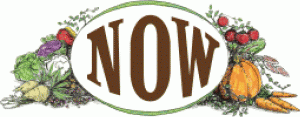 I spent a little time in my community garden this weekend prepping the soil, turning under the rye I planted last fall to fix some nitrogen, blending in a bit of mushroom and some rich, equine manure, and a little weeding.
I spent a little time in my community garden this weekend prepping the soil, turning under the rye I planted last fall to fix some nitrogen, blending in a bit of mushroom and some rich, equine manure, and a little weeding.
Later, I chatted with one of the other gardeners, discussing what we thought we could get to grow this year. (As newbie gardeners both, we know it’s not necessarily what you plant!)
The last thing on our minds was tropical fruit. I mean, even experienced farmers wouldn’t waste time on plants that don’t naturally grow here. Would they?
Well, apparently yes.
Bob Duncan in North Saanich is doing just that, and having great success at that. I’ve often thought that having a 100% local diet is impossible because there are just too many things that have become staples in my diet that would need to be supplemented from around the globe, lemons being one. Looks like Bob has that all under control. See the story in the Globe & Mail.
With over 300 tree types to choose from, the 100% 100 mile diet just got a little more likely:
- 200 apple tree varieties
- Over 80 other fruit trees, including: pears, plums, peaches, nectarines, apricots, cherries, figs, grapes, kiwi, quince and medlar (I don’t even know what that is)
- Over 30 citrus varieties
- Over 15 varieties of hardy sub-tropicals, including: pomegranates, persimmons, loquats, feijoa, jujubes, and olives
Now, if he can figure out a way to grow coffee and the occasional banana, we’re all set.

